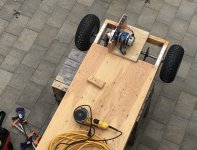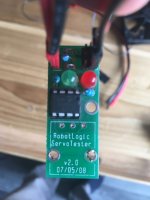Bluebeagle
New member
- Messages
- 19
- Reaction score
- 1
Hi all,
We have been slowly assembling an electric go cart with some gifted parts, in particular a motor, speed controller and battery. The motor is great. It's looking like we may need to go with a new speed controller too. Here's the question. We have a burly 24 v 1875w 2.5hp motor. Does the speed controller have to match the potential power output of the motor? Easy to find a 24v speed controller, it is near impossible to find a 24v/2000 w speed controller. They mostly exist with 48v motors. In other words could we go with a 24 v 1000 w speed controller?
Thanks for the feedback!
Jeff
We have been slowly assembling an electric go cart with some gifted parts, in particular a motor, speed controller and battery. The motor is great. It's looking like we may need to go with a new speed controller too. Here's the question. We have a burly 24 v 1875w 2.5hp motor. Does the speed controller have to match the potential power output of the motor? Easy to find a 24v speed controller, it is near impossible to find a 24v/2000 w speed controller. They mostly exist with 48v motors. In other words could we go with a 24 v 1000 w speed controller?
Thanks for the feedback!
Jeff


 Amazing. We would need on the order of a 24 v 100 ah battery to provide enough power. Unfortunately, that takes LIfePO4 off the table due to cost. So we will either go AGM route and stick with this motor or switch to something like a 36v/500 w motor. I've guesstimated our cart weight will approx. ~100lbs. + rider weight of ~125. Based on this guide, we could get away with this motor and reduce our battery requirements significantly.
Amazing. We would need on the order of a 24 v 100 ah battery to provide enough power. Unfortunately, that takes LIfePO4 off the table due to cost. So we will either go AGM route and stick with this motor or switch to something like a 36v/500 w motor. I've guesstimated our cart weight will approx. ~100lbs. + rider weight of ~125. Based on this guide, we could get away with this motor and reduce our battery requirements significantly.